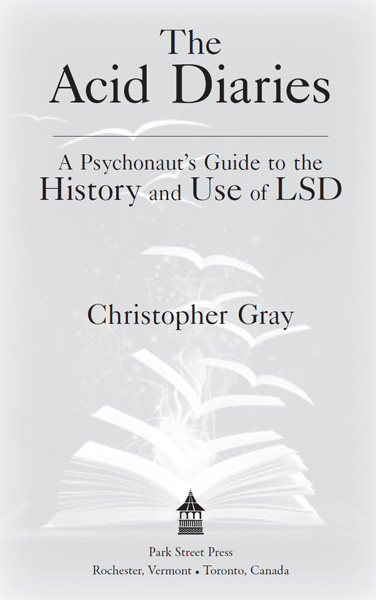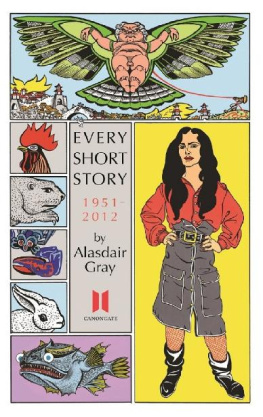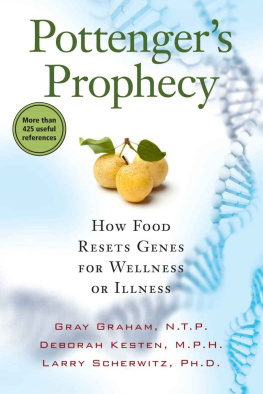
For the Children
The
Acid Diaries

A unique account of a courageous psychonauts journey into the preternatural depths of human consciousness.
MARTIN A. LEE, COAUTHOR OF ACID DREAMS
The Acid Diaries is the best insiders portrait of the psychedelic journey Ive ever found; the writing is stunningly beautiful in its effervescent candor. The Acid Diaries is an exceptionally honest and unguarded book.
DR. CHRISTOPHER M. BACHE, AUTHOR OF LIFECYCLES DARK NIGHT/EARLY DAWN, AND THE LIVING CLASSROOM
Instant enlightenment? Hardly. One has to work for it, as outlined in this book... highly recommended...
JONATHAN OTT, ETHNOBOTANIST, WRITER, TRANSLATOR, PUBLISHER, NATURAL PRODUCTS CHEMIST, AND BOTANICAL RESEARCHER IN THE AREA OF ENTHEOGENS
Like any strong acid trip, there is both existential angst and cosmic bliss, and many states in between. The Acid Diaries is a contemporary classic of personal psychedelic exploration.
MICHAEL HOROWITZ, TIM LEARY'S AUTOBIOGRAPHER
All psychonauts will admire and profit from this amazing gift.
JOHN ALLEN, CHAIRMAN OF GLOBAL ECOTECHNICS AND INVENTOR OF THE BIOSPHERE 2 PROJECT
... a rich, dense, philosophical, and psychological trip memoir.
JON TAYLOR, EROWID
If you have any interest at all in acid, then get your hands on this book!
STEWART HOME, ARTIST, ACADEMIC, FILMMAKER, ACTIVIST, AND AUTHOR
Who, if I cried, would hear me among the angelic
orders? And even if one of them suddenly
pressed me against his heart, I should fade in the
strength of his stronger existence. For Beautys nothing
but beginning of Terror were still just able to bear,
and why we adore it so is because it serenely
disdains to destroy us. Every angel is terrible.
RAINER MARIA RILKE, DUINO ELEGIES
Preface
WHAT FOLLOWS IS A report on a self-experiment with the psychedelic drug lysergic acid diethylamide (LSD).
There are two main parts to it: first, what happened to me over the period I took the drug, which was close on three years; and second, accounts, in their own words, of other peoples experiences before it was banned in the mid-1960s, plus a synopsis of what little theory there is as to what the drug does to you.
The LSD used was black market and high quality. I always took it alone, at regular two- to three-week intervals, gradually stepping up the dose. For the first year I made a systematic attempt to turn the drugs energy inward, using methods pioneered during the decade before its criminalizationthat is to say, with the subject reclining, using a blindfold, and listening to music on earphones. After that first year I took it outdoors, though still on my own, deep in woodlands close to where I live.
Roughly speaking, the experiment could be divided into three stages. The first was about personal, biographical issues. The second was about boundary and ego loss, sometimes harrowing, and not infrequently associated with the supernatural. The third consisted of glimpses of something transcendent and deeply sacred. The three interpenetrated and overlapped, but those were the basic themes.
Case history... ghost story... and finally theophany.
I have used first-person narrative throughout, both to convey the immediacy of the experience, and to underline that any speculation I may make is entirely my own responsibility. I have felt myself to be in the position of geographers or explorers of an earlier age, as they pushed into terra incognita. I am still not sure myself of exactly what happened, or of what I saw. In the words of Terence McKenna:
The early approach with psychedelics was the correct one. This is the notion that intelligent, thoughtful people should take psychedelics and try and understand whats going on. Mature, intelligent people need to share their experiences. Its too early for a science. What we need now are the diaries of explorers. We need many diaries of many explorers so we can begin to get a feeling for the territory.
Batch 25
EARLY IN 1943, AT the height of the Second World War, a research chemist called Albert Hofmann employed by Sandoz Pharmaceuticals at Basel in Switzerland accidentally absorbed a tiny quantity of a chemical he was working with. The compound, originally synthesized for its possible use in obstetrics, had previously only been tested on lab animals, where its effects had seemed negligible. Now, however, Albert Hofmann felt as though he were drunk. The world seemed dreamlike, colors began to glow with a deep inner light, and his sense of time became erratic. After about two hours these phenomena gradually faded away, leaving no aftereffects; but the chemist, his curiosity piqued, decided to run further tests.
Lab-coded LSD-25, the compound was the twenty-fifth of a series of lysergic acid derivativesanalogs of ergot, a naturally occurring fungus that grows with particular vigor on rye and has been used widely in folk medicine since at least the Middle Ages. Three days later, Hofmann took what he considered a minuscule dose, 250 microgramsthat is, 250 millionths of a gram. His lab notes read:
April 19, 1943: Preparation of an 0.05% aqueous solution of d-lysergic acid diethylamide tartrate.
4:20 P.M.: 0.05 cc (0.25 mg LSD) ingested orally. The solution is tasteless.
4:50 P.M.: no trace of any effect.
5:00 P.M.: slight dizziness, unrest, difficulty in concentration, visual disturbances, marked desire to laugh...
At which point the notes stop abruptly. Hofmann found he could no longer write, nor even think, clearly. Starting to panic, he asked his lab assistant to accompany him on his bicycle journey back home, but no sooner had the two set off than the drugs effects became positively alarming. I had great difficulty in speaking coherently, Hofmann later recorded. My field of vision swayed before me, and objects appeared distorted like the images in curved mirrors. I had the impression of being unable to move from the spot, although my assistant told me afterwards that we had cycled at a good pace.
By the time he finally arrived home, the structure of time and space was coming apart. The outer world was undulating and hallucinatory; his body image was distorted, and he was finding it difficult to breathe. Colors turned into sounds and sounds into colors. During brief moments of lucidity, he could only imagine he had poisoned himself with the drug and was dying; or, alternatively, that he had driven himself irrevocably insane. Later he described the height of his delirium.
The worst part of it was that I was clearly aware of my condition though I was incapable of stopping it. Occasionally I felt as being outside my body. I thought I had died. My ego was suspended somewhere in space and I saw my body lying dead on the sofa. I observed and registered clearly that my alter ego was moving round the room, moaning.
I quote this in full. While Hofmanns tripped-out bicycle ride was to become iconic for the 1960s and 70s, this other part of his report, at the very height of his intoxication, has been comparatively neglected. Hofmann himself seemed uncomfortable with it. Was he noting this sense of dissociation as a particularly outlandish hallucinationor was he half-suggesting that he had somehow left his body?
However, this was to be the climax of his experience; shortly afterward, some six hours after he first took the drug, its effects started to ebb. Slowly things began to return to normal, and finally he fell asleep.
Next page















